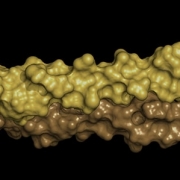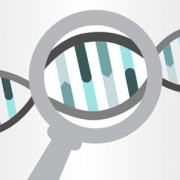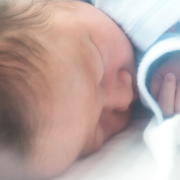Gene therapy – a new approach for paediatric hearing loss
A new gene therapy is being trialled for children with a rare form of deafness caused by variants in the OTOF gene
Hearing and auditory processing are incredibly complex, so it is unsurprising that there are a huge number of different ways this process can be disrupted, resulting in deafness or hearing loss. Among these are a number of genes, in which certain variants may compromise hearing.
Deafness in the genome
There are more than 30 different genes associated with non-syndromic hearing loss (where hearing is the only affected part of the body, as opposed to syndromes where it is only one of several affected systems), many of which have roles in the development and functioning of the inner ear.
Among these is the OTOF gene, which encodes the protein otoferlin. Otoferlin is necessary for the tiny hair cells in the inner ear to transmit the information received by the ear to the nerve that takes the signal to the brain. Children can have two non-functional copies of the OTOF gene and no other functional issues with the ears and brain, but the connection between them is disrupted.
“Children with a variation in the OTOF gene are born with severe to profound hearing loss, but they often pass the newborn hearing screening so everyone thinks they can hear. The hair cells are working, but they are not talking to the nerve,” explained academic lead in Otology and Neurotology at Cambridge University Hospitals Trust, Professor Manohar Bance, who is leading the trial at Addenbrooke’s Hospital in Cambridge.
As a monogenic condition, deafness caused by otoferlin deficiency is an ideal target for gene therapy due to everything else being present and functioning correctly. Although experimental, Professor Bance and his colleagues believe that gene therapy could be more effective than the current standard treatment of cochlear implants. He stressed that, like with cochlear implants, the best results are likely to be seen when treatment is administered early in life, while the parts of the brain that deal with processing sound are still able to adapt.
- Further reading: What are genome editing and gene therapy?
Clinical trial
The trial will recruit 18 children in the UK, Spain and the US who will each be followed for five years to see how the gene therapy affects their hearing.
The gene therapy will work by injecting a harmless virus that contains a working copy of the OTOF gene into the patient’s cochlea. The procedure is performed under general anaesthetic and is similar to cochlear implant surgery.
It is especially important that patients who have another treatment option – in this case a cochlear implant –are not disadvantaged by taking part in a clinical trial, compared to the normal standard of care. As such, the clinical trial is planned in three stages, to minimise any risk to the young patients:
- Stage 1: a low dose of the gene therapy will be introduced into one ear only.
- Stage 2: if there has been no adverse reaction, a second higher dose of the same gene therapy will be introduced into the same ear as Stage 1.
- Stage 3: after ensuring the safety and effectiveness of the first two stages, a final dose will be administered in both ears.
If the treatment causes a reaction, or is unsuccessful after 6 months, the children will still be able to receive cochlear implants if their parents wish.
Opening up new possibilities
Preliminary results from the first stage of the trial have provided encouraging results with its first patient in regard to safety and efficacy. If the approach is successful at the completion of the study, it could be used to target other genes causing deafness or hearing loss.
“It’s really important that we get the first gene therapy treatment right because it will allow us to proceed to treating other genetic conditions” said Professor Bance.









